Returning the Sword
In 1945, just after the end of World War II, Captain Orval Amdahl brought home a Japanese sword as a souvenir of war. Sixty-eight years later, he gave it back.
Orval Amdahl grew up in rural Minnesota and enlisted in the Marines during World War II. In August 1945, the United States dropped atomic bombs on the Japanese cities of Hiroshima and Nagasaki, ending the war. Soon after, Orval’s division was sent to keep the peace in Nagasaki, and the devastation he witnessed there haunted him. When he returned home, he tried to move on, but he couldn’t forget the war―or the sword. And many years later, at the age of ninety-three, he got a chance to do something incredible. He met with the family of the soldier who had owned the sword and returned it to them.
A powerful story of war, peace, and reconciliation.
RESOURCES
- Discussion guide for younger readers
- Discussion guide for older readers
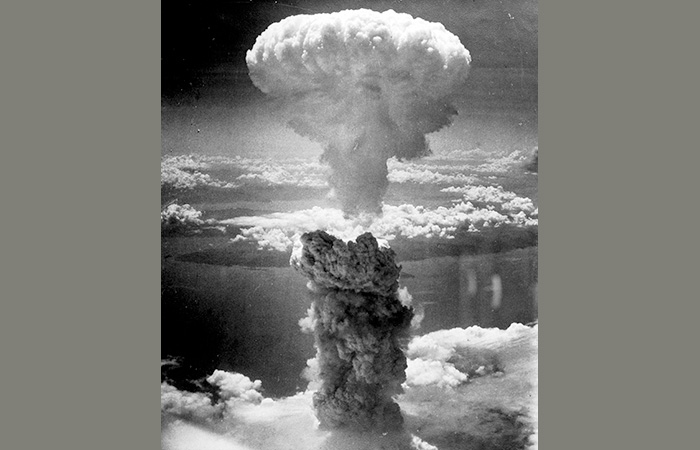 Nagasaki Atomic Bomb Mushroom Cloud (Wikipedia)
Nagasaki Atomic Bomb Mushroom Cloud (Wikipedia)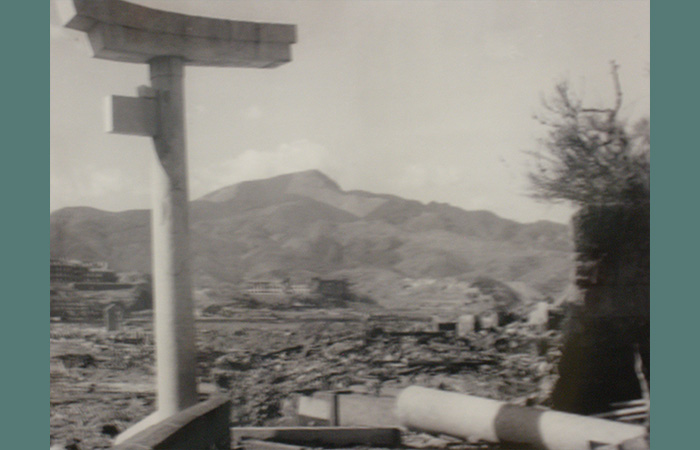 Damage in Nagasaki, unknown photographer
Damage in Nagasaki, unknown photographer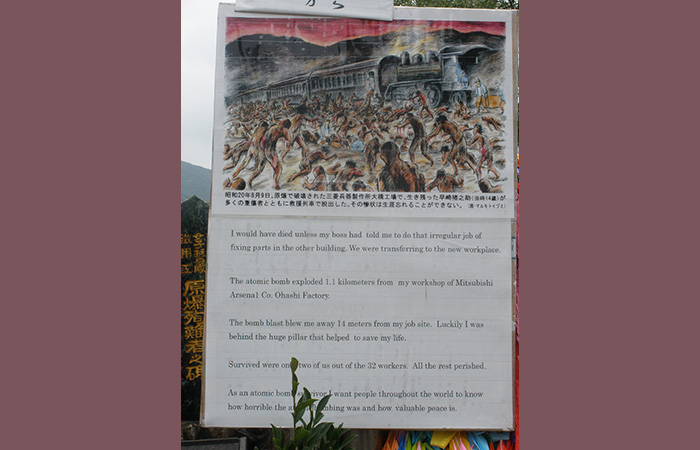 Nagasaki Rescue Train, Artist Rendition
Nagasaki Rescue Train, Artist Rendition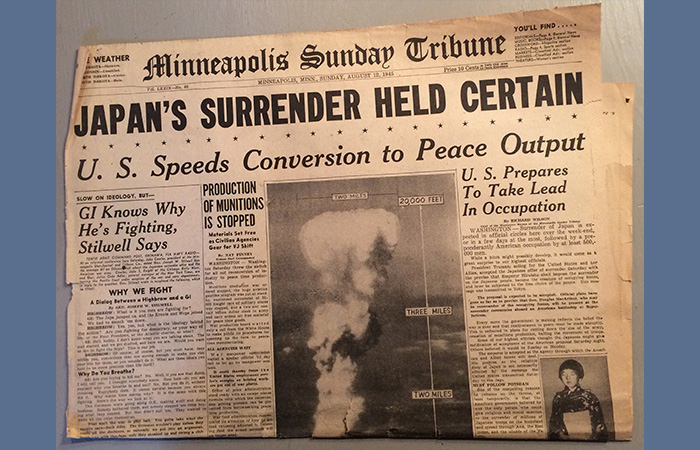 Minneapolis Sunday Tribune, August 12, 1945, Courtesy of Tom Trow’s collection
Minneapolis Sunday Tribune, August 12, 1945, Courtesy of Tom Trow’s collection Marine Captain Orval Amdahl, date unknown
Marine Captain Orval Amdahl, date unknown Family photo, Marie and Orval Amdahl with baby Ann, Minnesota History Center
Family photo, Marie and Orval Amdahl with baby Ann, Minnesota History Center Permission by the U.S. Government to enter any “off limits” area – courtesy of Orval Amdahl
Permission by the U.S. Government to enter any “off limits” area – courtesy of Orval Amdahl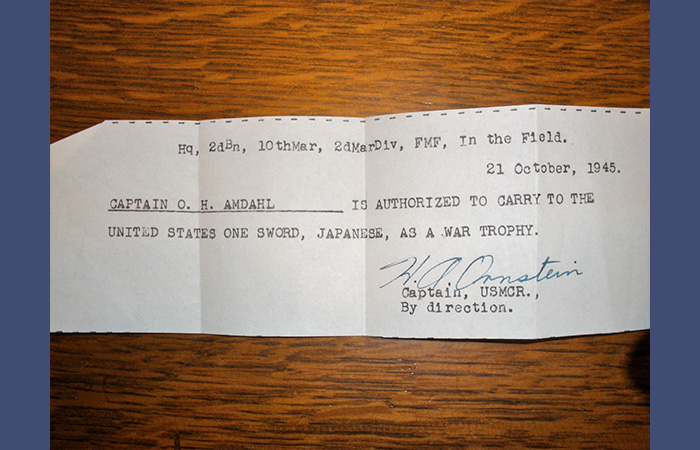 Authorization by the U.S. Government to take a sword as a “war trophy” – Courtesy of Orval Amdahl
Authorization by the U.S. Government to take a sword as a “war trophy” – Courtesy of Orval Amdahl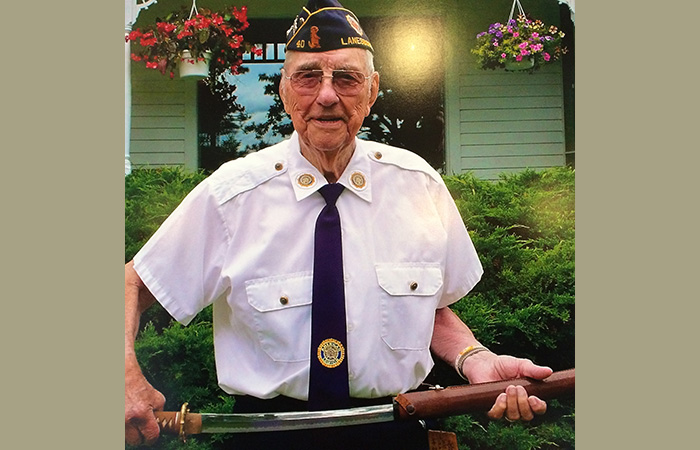 Orval Amdahl in American Legion uniform with sword, date unknown
Orval Amdahl in American Legion uniform with sword, date unknown Lanesboro, Minnesota, taken from Orval and Marie’s property overlooking the small town.
Lanesboro, Minnesota, taken from Orval and Marie’s property overlooking the small town.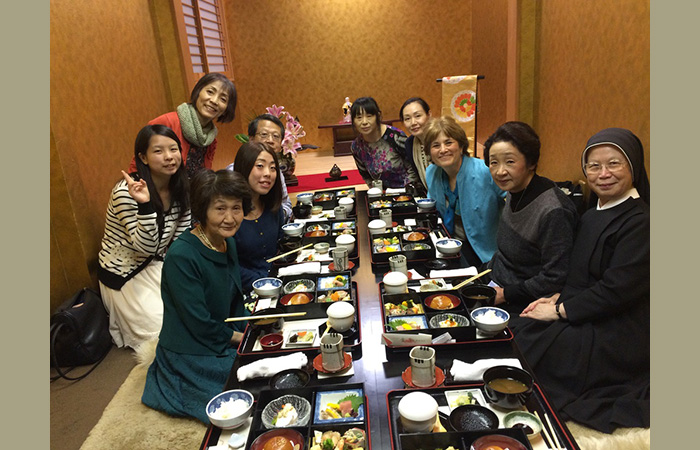 Caren with Nagasaki-St. Paul Sister City members in Nagasaki who helped Caren in writing her book, Sachiko: A Nagasaki Bomb Survivor, 2014
Caren with Nagasaki-St. Paul Sister City members in Nagasaki who helped Caren in writing her book, Sachiko: A Nagasaki Bomb Survivor, 2014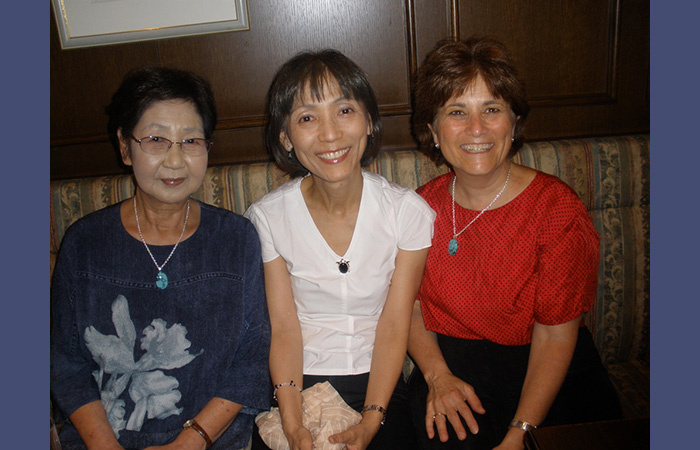 Sachiko Yasui, Fumiko Yamaguchi and Caren Stelson – while Caren was interviewing Sachiko for her story of surviving the Nagasaki atomic bombing. Fumiko served as translator, 2011.
Sachiko Yasui, Fumiko Yamaguchi and Caren Stelson – while Caren was interviewing Sachiko for her story of surviving the Nagasaki atomic bombing. Fumiko served as translator, 2011.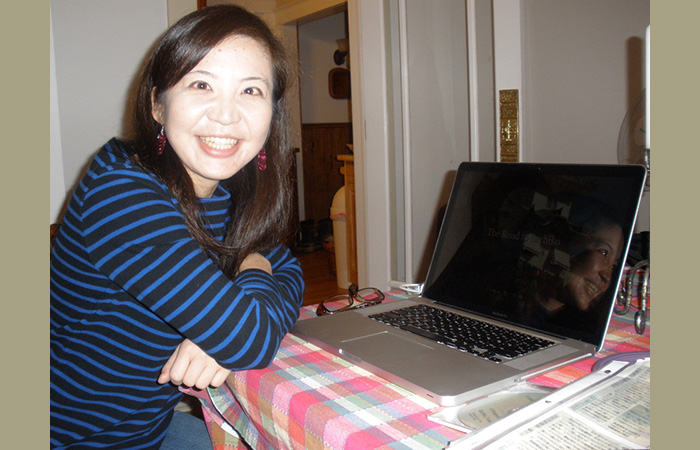 Keiko Kawakami (senior instructor of Japanese, University of Minnesota) who served as translator and Japanese cultural interpreter for Caren’s Nagasaki projects
Keiko Kawakami (senior instructor of Japanese, University of Minnesota) who served as translator and Japanese cultural interpreter for Caren’s Nagasaki projects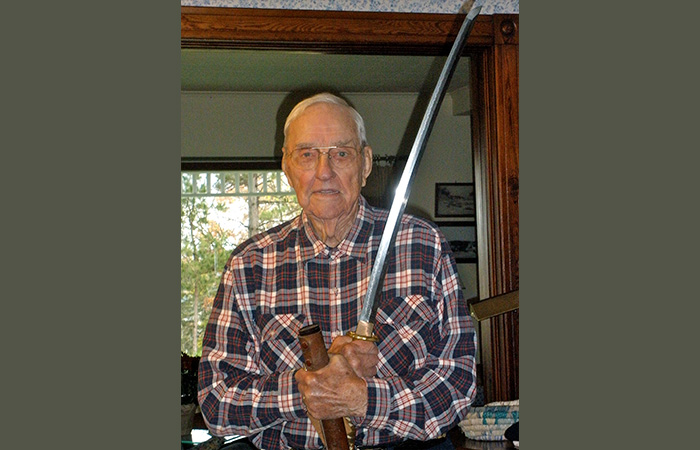 Orval with sword during Caren’s first meeting, September 2013
Orval with sword during Caren’s first meeting, September 2013 Orval and Marie Amdahl with Caren in the Amdahls’ home, 2013
Orval and Marie Amdahl with Caren in the Amdahls’ home, 2013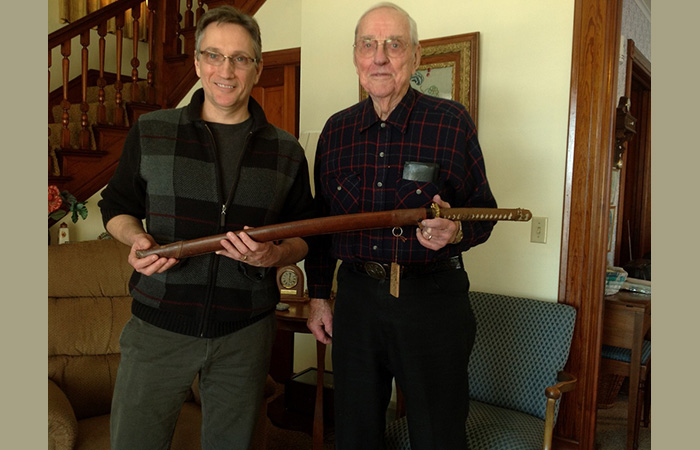 Orval with Clifton Truman Daniel, eldest son of President Harry Truman in the Amdahls’ home, 2013
Orval with Clifton Truman Daniel, eldest son of President Harry Truman in the Amdahls’ home, 2013 Motomura family at Como Park with translator Fumiko Yamaguchi, 2013
Motomura family at Como Park with translator Fumiko Yamaguchi, 2013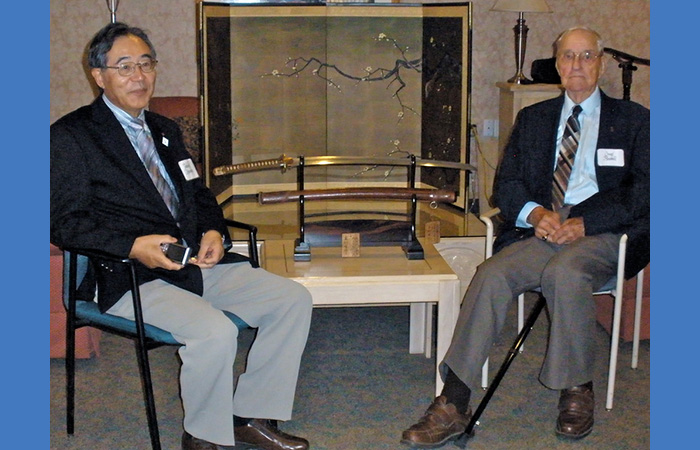 Motomura and Amdahl iconic pose with the Sword, September 20, 2013.
Motomura and Amdahl iconic pose with the Sword, September 20, 2013. “Miss Ohayo,” Ceramic clay figure, gift to the Amdahl’s from the Motomuras, 2013
“Miss Ohayo,” Ceramic clay figure, gift to the Amdahl’s from the Motomuras, 2013 Photo book of the Return of the Sword, 2015
Photo book of the Return of the Sword, 2015 Caren in Nagasaki with Motomuras and Takeyuki Miyanishi, President of the Nagasaki-St. Paul Sister City Committee
Caren in Nagasaki with Motomuras and Takeyuki Miyanishi, President of the Nagasaki-St. Paul Sister City Committee Orval’s funeral at Bethlehem Lutheran Church, Lanesboro, 2015
Orval’s funeral at Bethlehem Lutheran Church, Lanesboro, 2015 Orval’s gravesite in Lanesboro, 2015
Orval’s gravesite in Lanesboro, 2015
Funeral flowers and note from the Motomuras, 2015

Peace statue at the Nagasaki Peace Park
 Nagasaki must remain the last atomic bombing site.
Nagasaki must remain the last atomic bombing site.
Quote from Franklin Delano Roosevelt, memorial sculpture in Washington, D.C.

How a Japanese Sword of War Became a Symbol of Friendship and Peace
written by Caren Stelson
illustrated by Amanda Yoshida
Carolrhoda Books, 7 Oct 2025
ISBN 979–8765611531, ages 7 to adult

